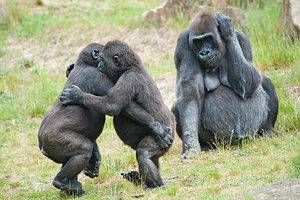Gorillas are the world’s largest primates. These amazing animals are surprisingly similar to humans in many ways. Did you know that baby gorillas can hum and sing or that they are also called infants?
Keep reading to find out nine astounding baby gorilla facts and check out some adorable juvenile gorilla pictures.
#9: A Baby Gorilla can Hum and Sing
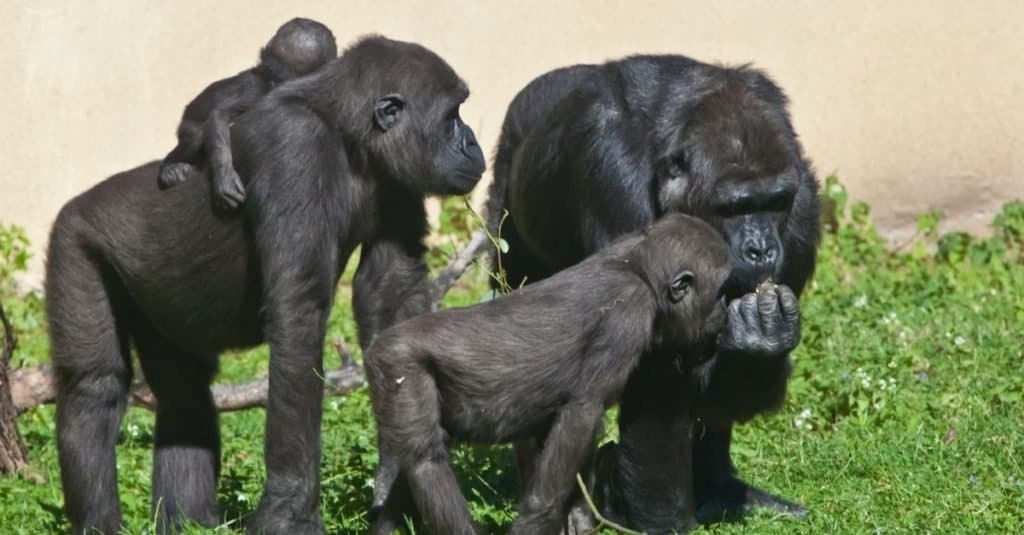
Gorillas stick together in communities for protection and social interaction.
©Mikhail Semenov/Shutterstock.com
Have you ever loved a meal so much that it made you want to hum and sing? If you were a baby gorilla, this would be a reality for you! Researchers have found that when baby gorillas eat a meal they like, they hum and sing to express their satisfaction. Adult gorillas also use singing and humming to communicate to their babies that it is time to eat.
#8: A Baby Gorilla Learns Fast!

Gorilla babies depend on their mothers for protection.
©smatt000/Shutterstock.com
Newborn gorillas depend on their mothers for protection. This means that they cling to their mother’s chest or back for their first six months of life. However, by six months, they can walk independently. By the time they are 18 months old, gorilla babies can follow their mothers alone in small increments.
Gorillas learn primarily by copying adult gorillas in their families. While they are learning, groups of baby gorillas often wrestle and fight to learn how to protect themselves in the wild.
#7: Mother Gorillas Have Help Raising Their Babies

Baby gorillas are raised by the mothers and other juveniles in their families.
©iStock.com/opus1ny
When gorilla babies are born, it takes a village to raise them – literally. While gorilla mothers are the primary caregivers of the tiny primates, the baby’s siblings and other juveniles often lend a helping hand to the mother while her baby is still young. Typically, they take over simple tasks such as holding the baby or playing with them.
Blackback gorilla fathers also help in raising their babies and spend the most time caring for and playing with babies that are biologically theirs. On the other hand, Mountain gorilla fathers don’t know which babies are theirs, but they spend time caring for older gorilla babies.
#6: Baby Gorillas are Called Infants
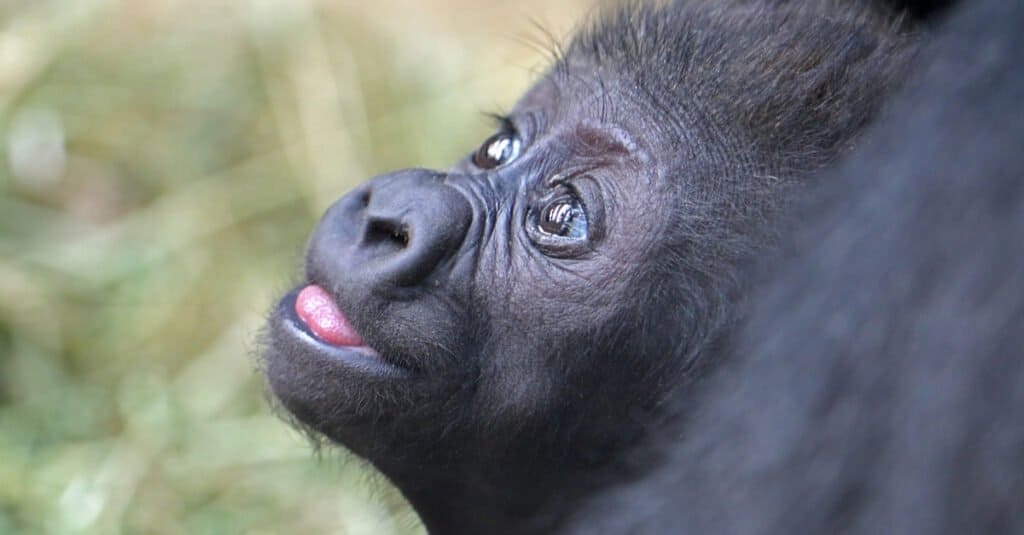
Baby gorillas are called infants.
©Edwin Butter/Shutterstock.com
Baby gorillas have many similarities to human babies. Like humans, baby gorillas are also called infants. Their mothers carry them in their wombs for eight to nine months, which is the same gestation period as humans!
However, when baby gorillas are born, they are much smaller than human babies, weighing in at around half the size, or approximately three to four pounds. Mother gorillas will only have babies once every three to four years, which is also as long as it takes for baby gorillas to stop breastfeeding and transition to the herbivorous diet that they maintain for the entirety of their adulthood.
#5: Young Gorillas Make Their Nests in Trees
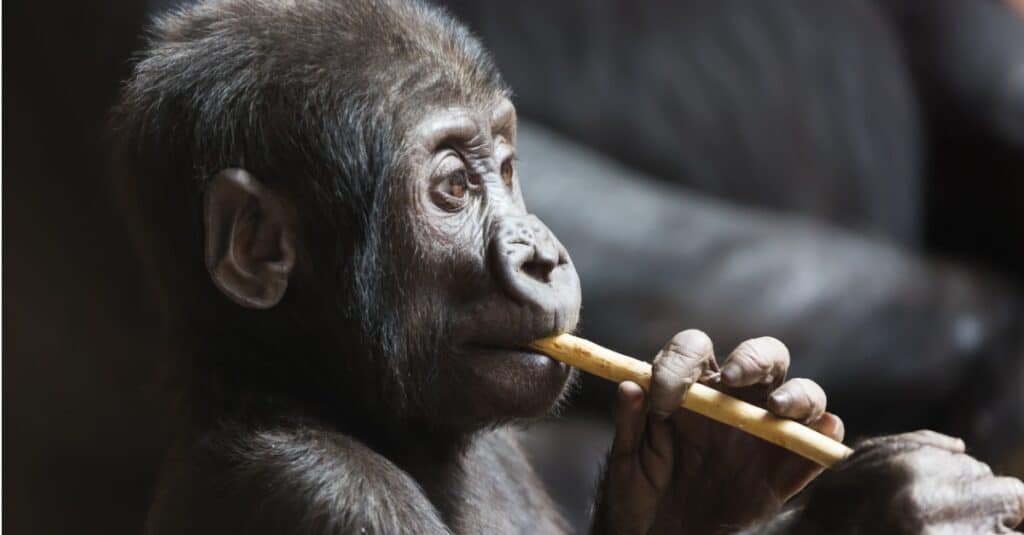
A gorilla baby has a snack.
©iStock.com/nantonov
While adult gorillas make their nests on the ground, baby gorillas prefer to have their nests in trees. These nests are circular and are made of branches, leaves, and foliage. Breastfeeding mothers share their nests with their babies, and all gorillas make new nests every night since they rarely sleep in the same place for consecutive nights.
Making nests in trees allows baby gorillas and gorilla families to protect themselves against potential threats. Mother and baby gorillas are light enough to rest in trees, which is why father gorillas are seldom found in tree nests with the mother and babies.
#4: Baby Gorillas Have Few Natural Predators
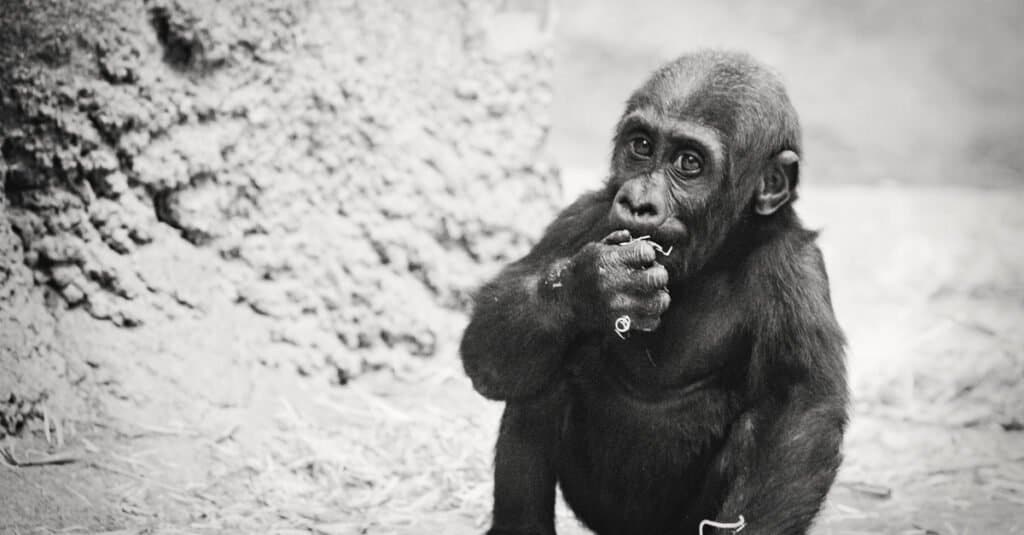
A gorilla baby has a snack.
©Sarah Van Geest/Shutterstock.com
Adult gorillas are large enough to protect themselves against most predatory animals in their habitats. This means they don’t have any natural predators. On the other hand, baby gorillas are vulnerable to attack due to their size and inability to protect themselves.
In particular, leopards are the main predator for baby gorillas.
Humans are the only other significant threat to gorillas. While humans do not kill them for meat, traps set for other animals in their habitats can ensnare baby gorillas and injure or kill them. Poachers are also known to kill gorillas for their heads, hands, or feet to be sold for profit.
#3: Gorillas and Their Babies Live in Families
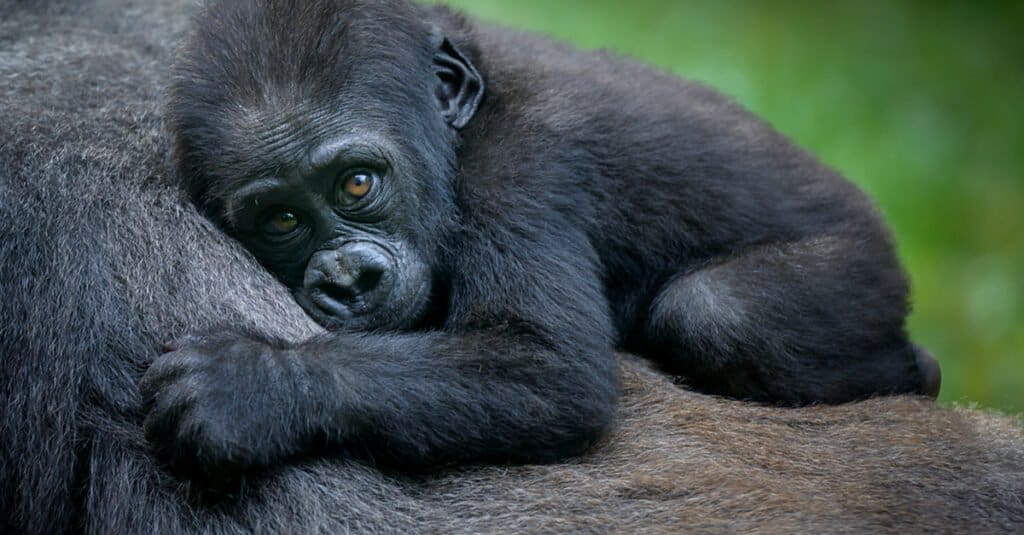
Baby gorillas rely on their mothers for protection.
©Asaf Weizman/Shutterstock.com
A group of gorillas with their babies is called a band or troop. When scientists studied these troops, they found that gorillas live in extended families or small villages. As baby gorillas grow up, they can choose to stay with the families they are born into. Some gorillas also choose to leave their families to join other troops once they reach adulthood. Gorilla families are usually made up of thirty gorillas.
#2: Some Baby Gorillas Have Twins
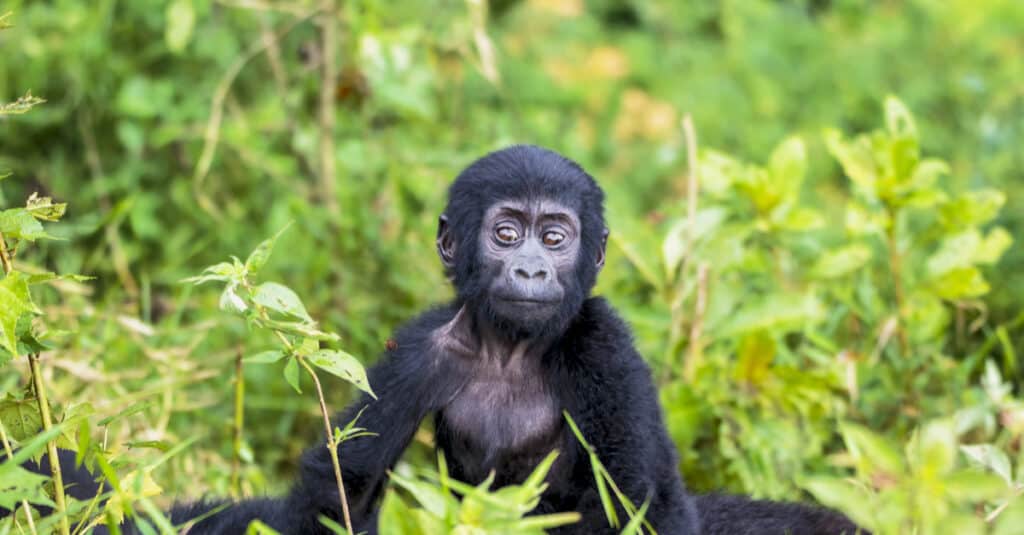
A gorilla baby clings to the back of its mother.
©Krasnova Ekaterina/Shutterstock.com
Female gorillas can carry one or two babies at a time. This means that some baby gorillas are born with a twin brother or twin sister. Even though twin pregnancies are possible, they only happen about as often as human twins occur. This equates to about one every ninety pregnancies.
#1: A Baby Gorilla Named Colo was the First Born in Captivity

Baby gorillas are covered in soft fur.
©Jurgens Potgieter/Shutterstock.com
On December 22, 1956, a bouncing baby gorilla came into the world. He was born in the Columbus Zoo in Ohio and was the first infant gorilla born in captivity! The zookeepers at Columbus Zoo named him Colo. Since his parents didn’t learn caretaking skills in the wild, Colo got her own nursery and was raised by zookeepers.
Colo went on to become a great-grandmother of the first gorilla baby successfully born by artificial insemination.
The photo featured at the top of this post is © Jurgens Potgieter/Shutterstock.com
Thank you for reading! Have some feedback for us? Contact the AZ Animals editorial team.




